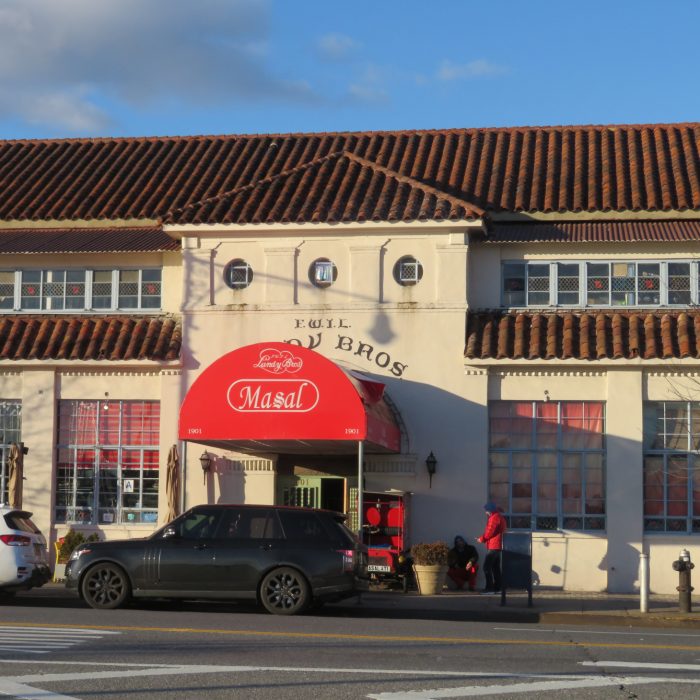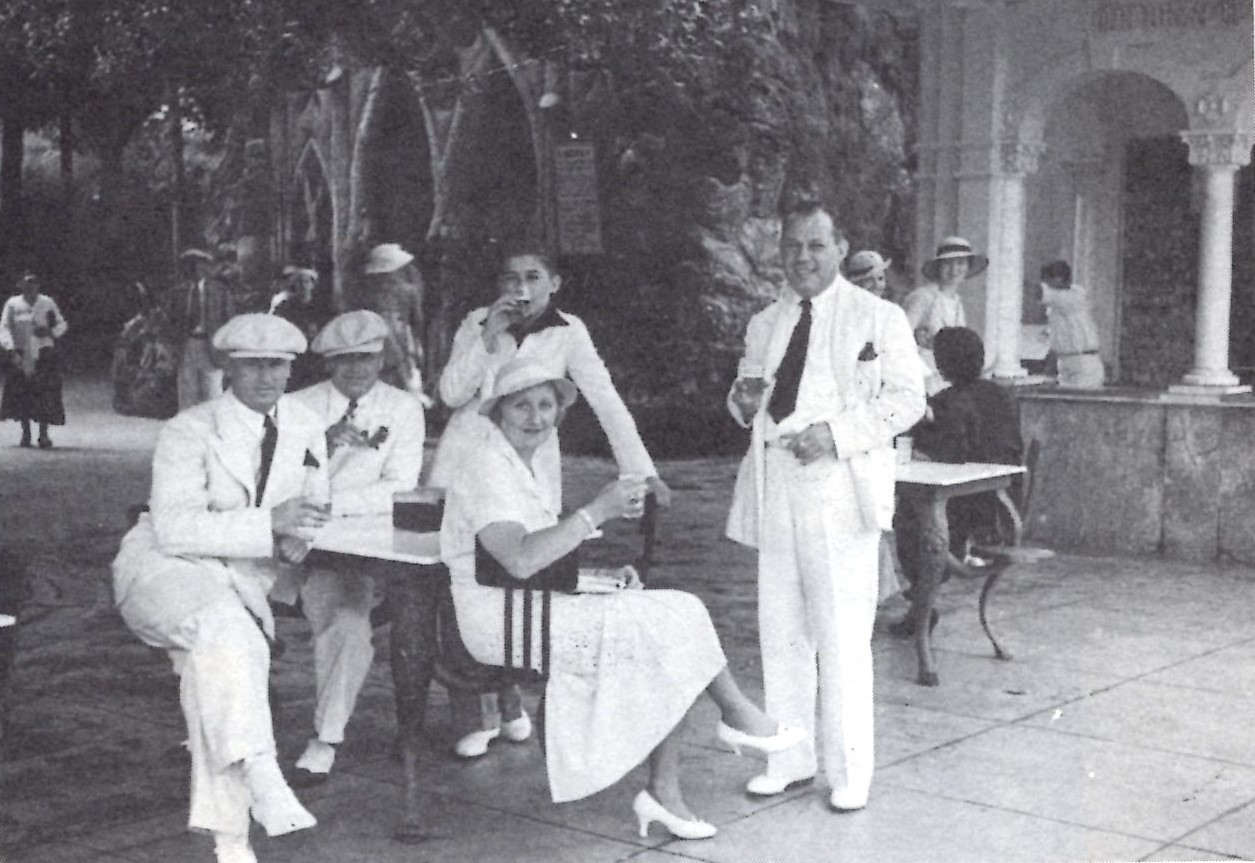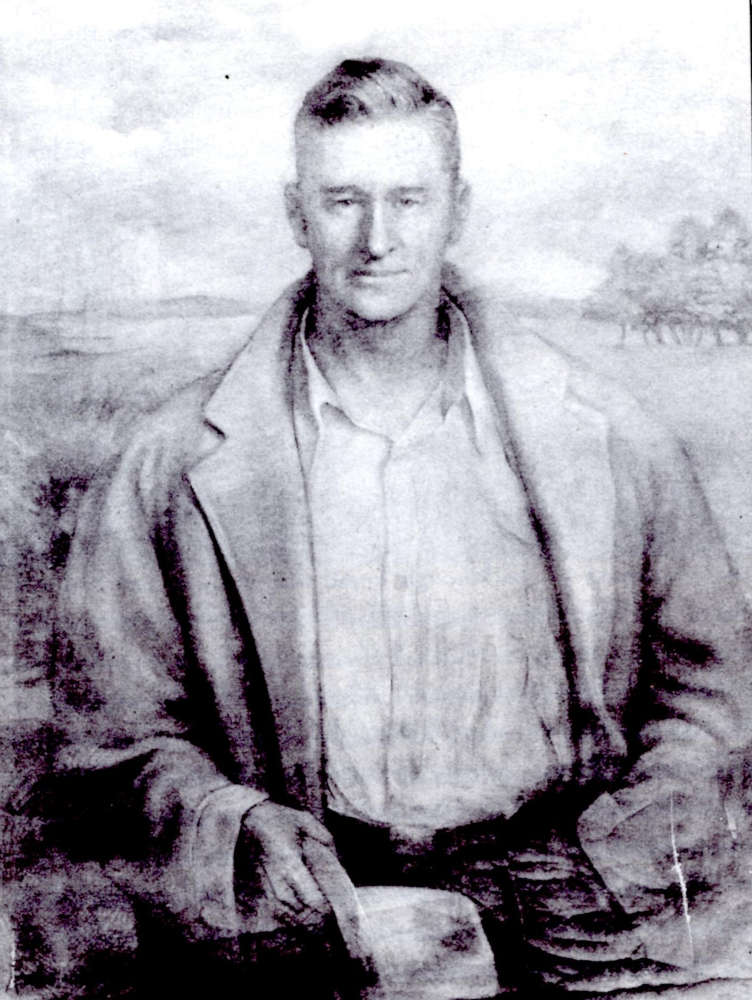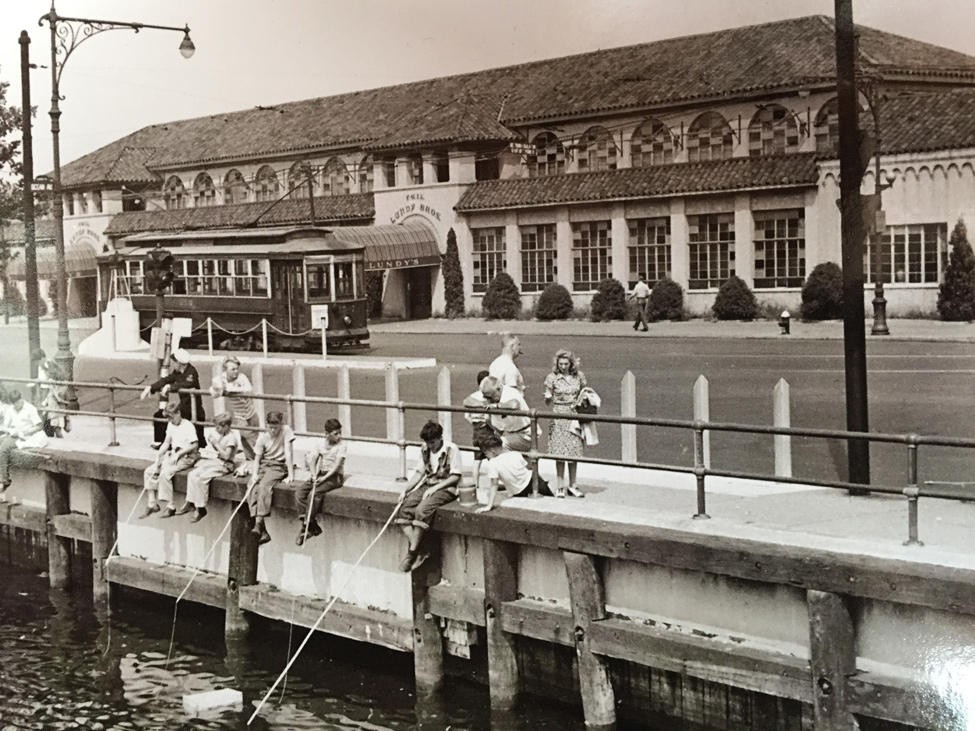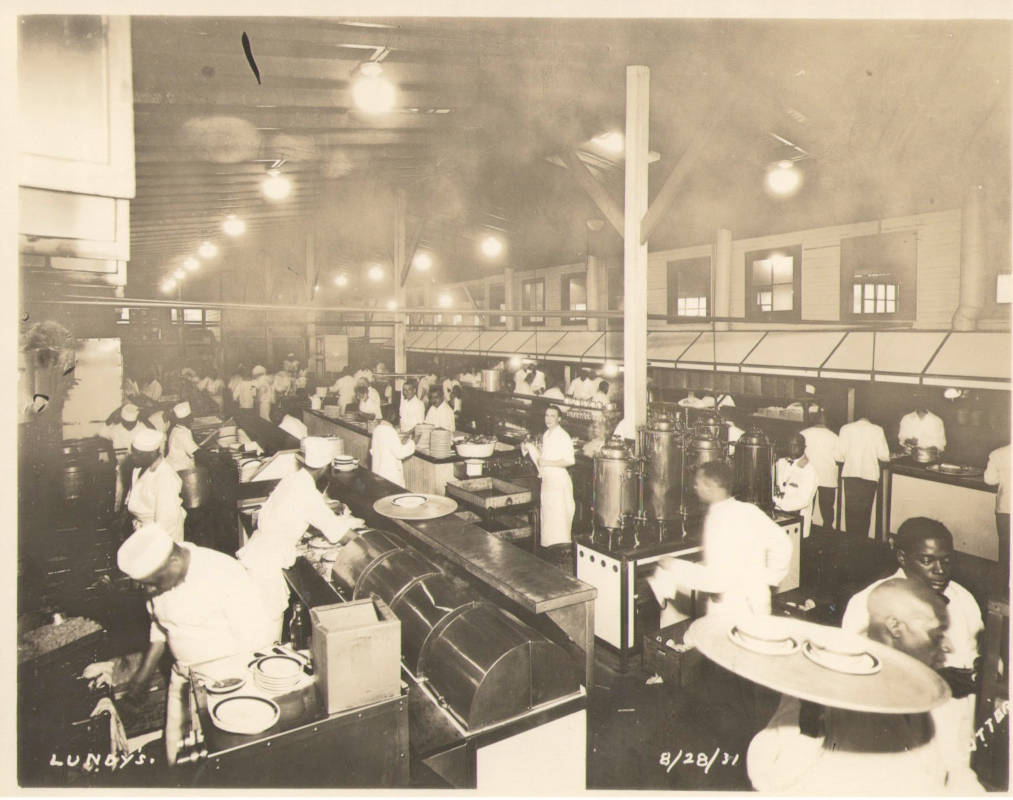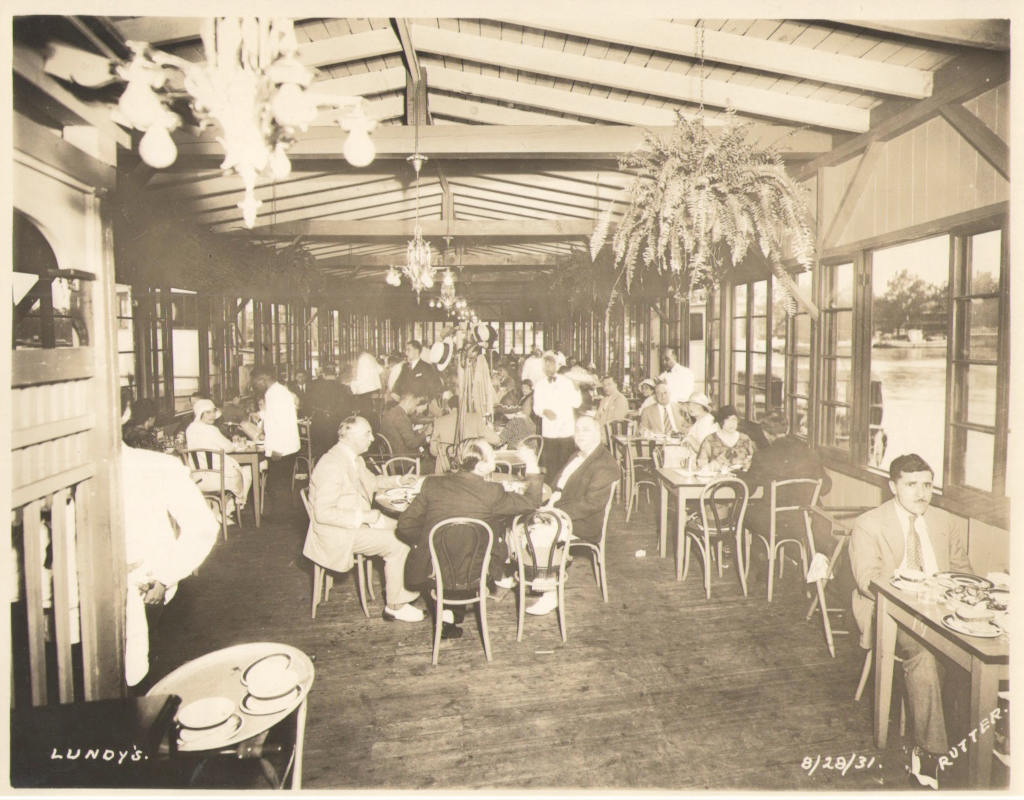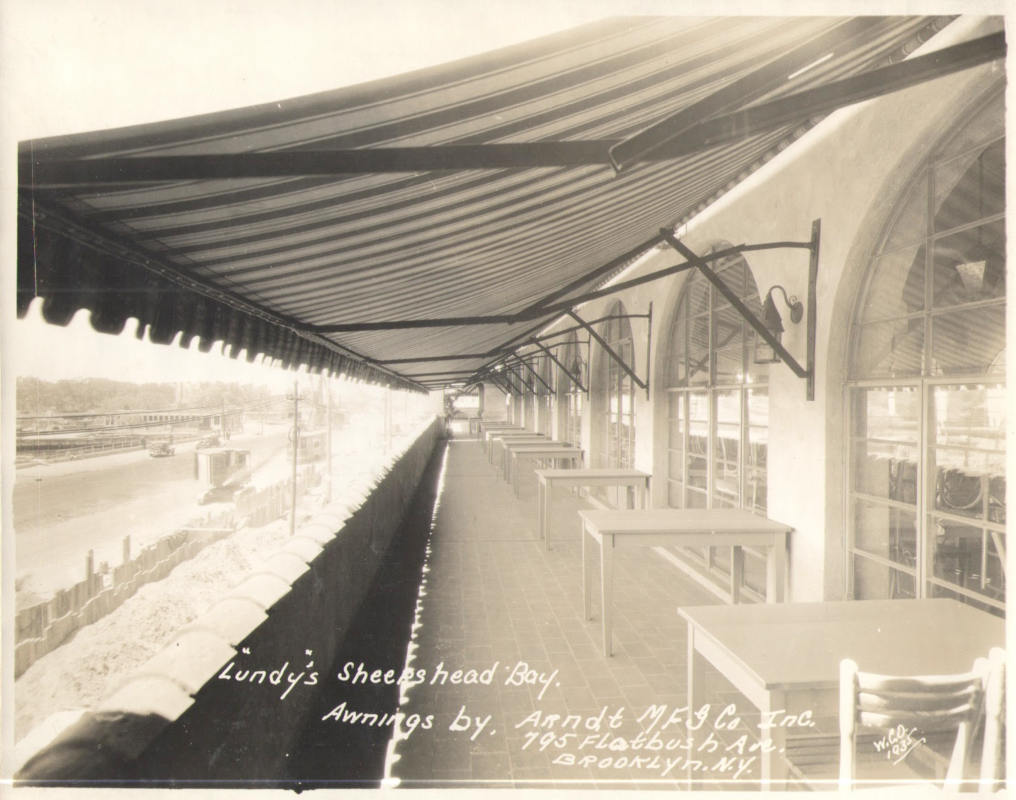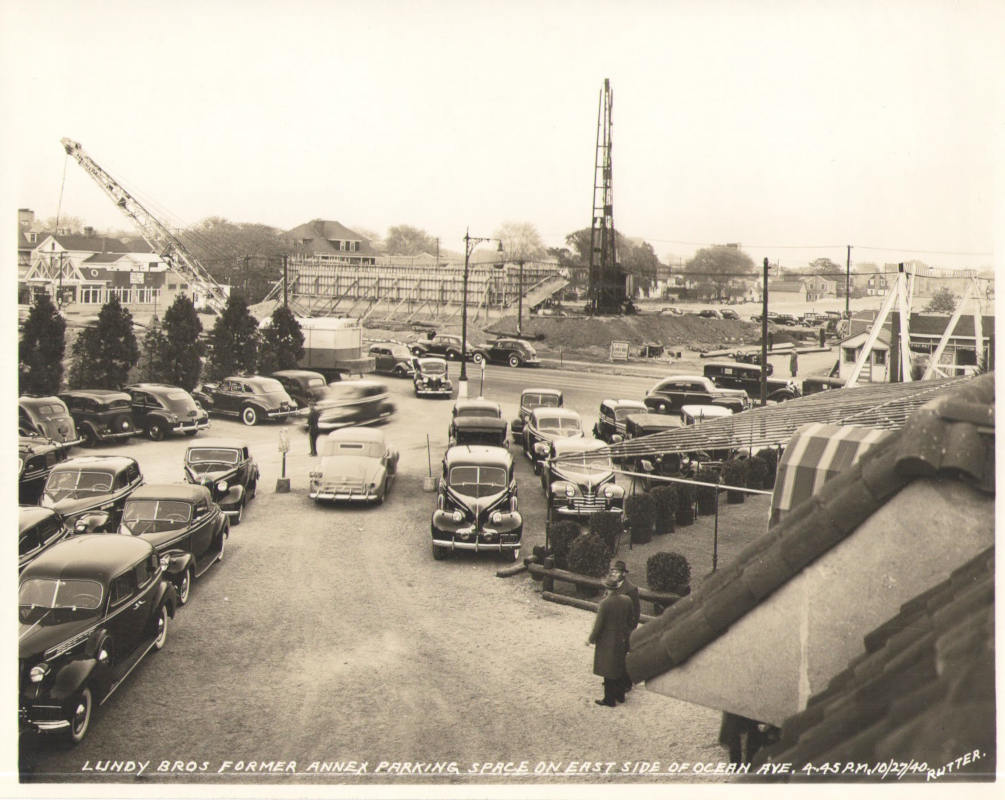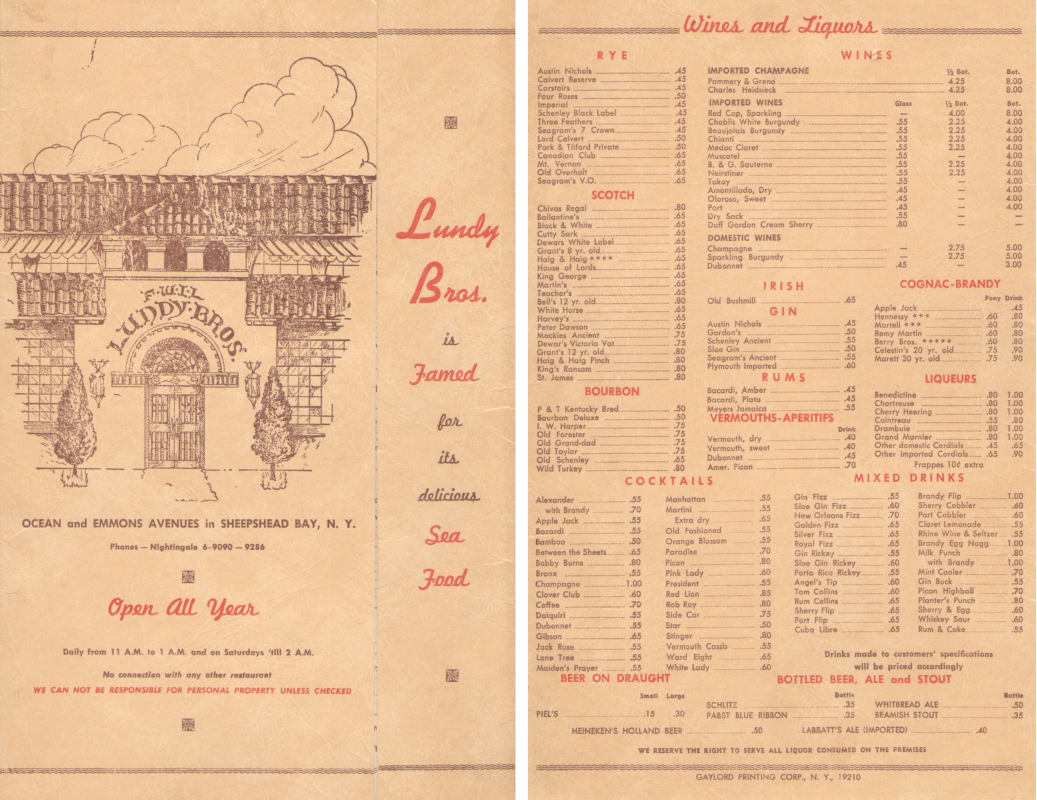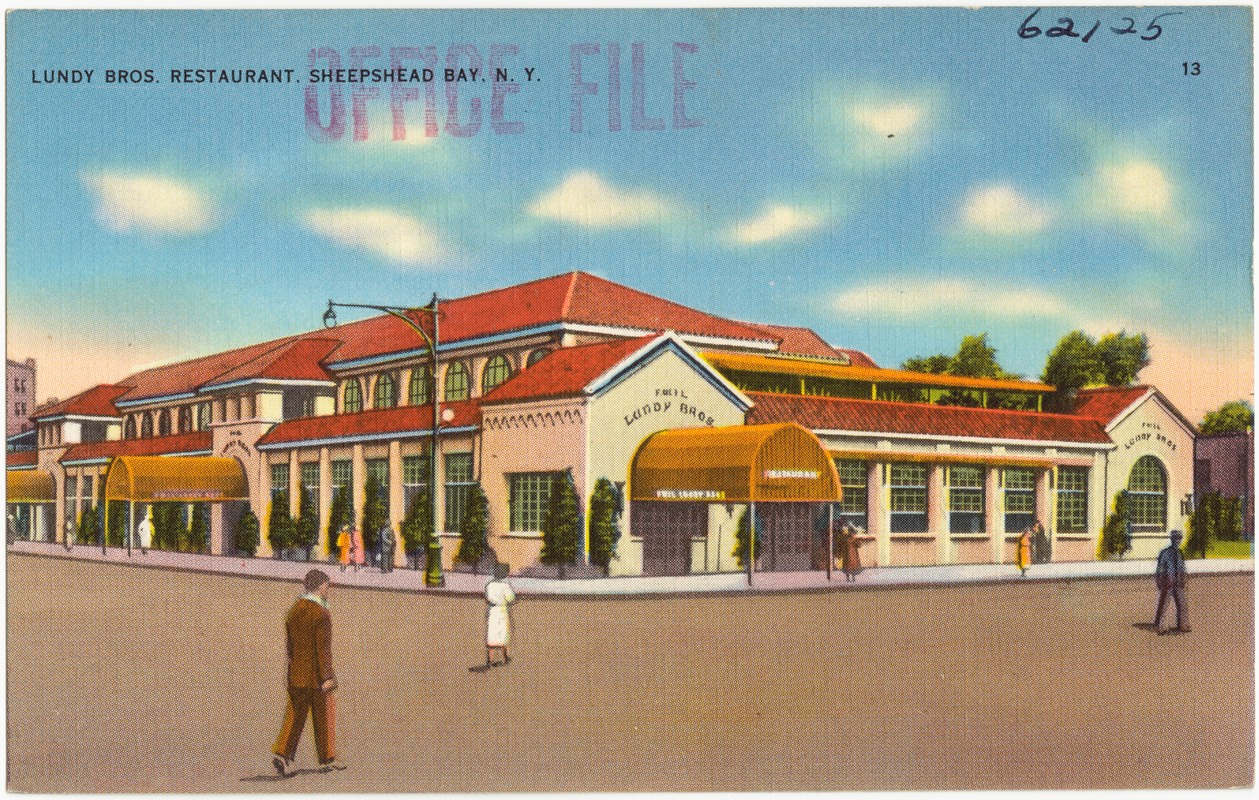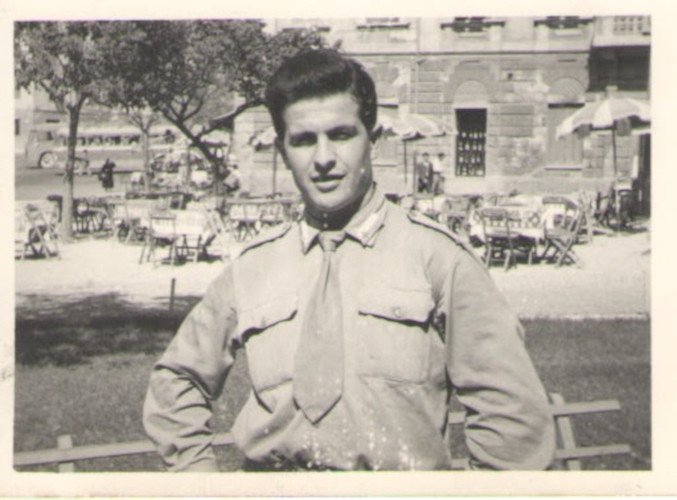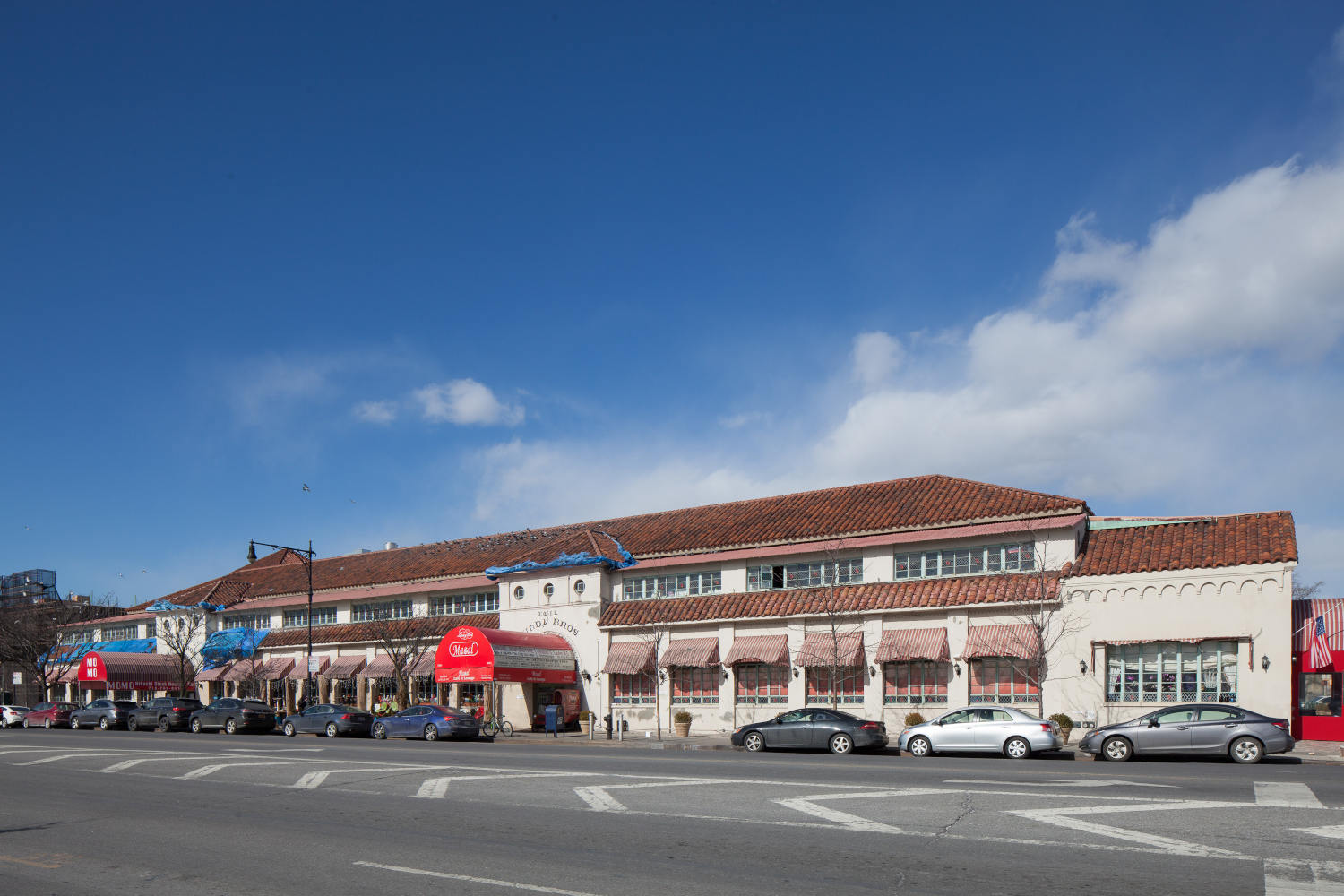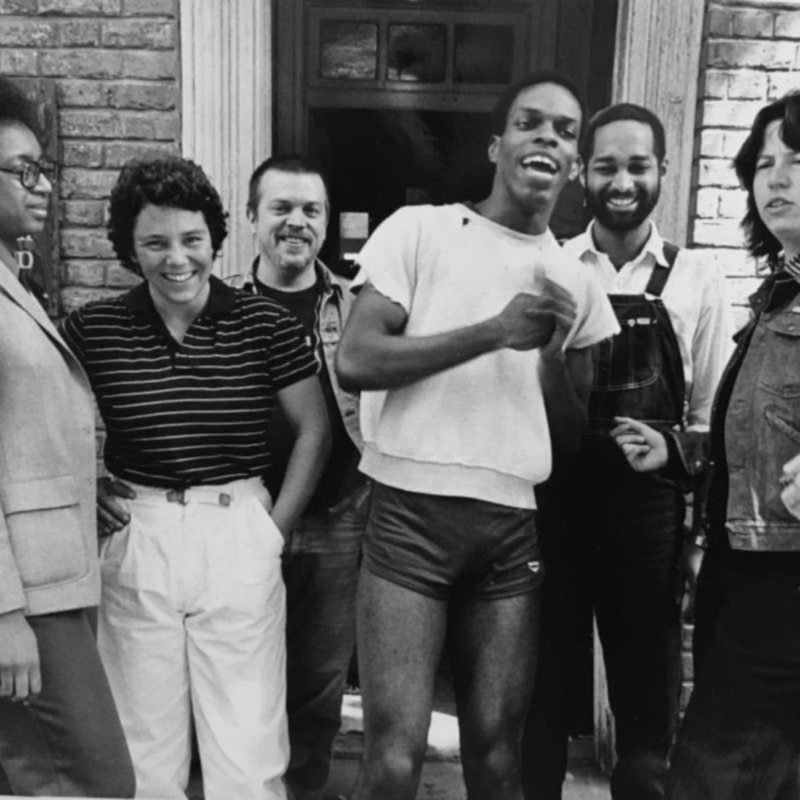overview
One of the most beloved and famous restaurants in New York City from the 1930s to the 1970s, this mammoth Spanish Colonial Revival restaurant building was owned and operated by gay proprietor Frederick William Irving Lundy.
Constructed in 1934, as part of the redevelopment of the Sheepshead Bay waterfront, it seated over 2,000 patrons, employed a staff of 385, and was thought to be one of the largest restaurants in the country.
History
Frederick William Irving Lundy (1897-1977), who went by Irving, was born and raised in Sheepshead Bay, Brooklyn. In the 1920s, he opened a seafood restaurant on a neighborhood pier off Emmons Avenue named F.W.I. L. Lundy Brothers, distinguishing it as a sole proprietorship but also tying it to his family’s long-established shellfish business that, at the time, had been operating on that same pier.
During the 1920s, Sheepshead Bay underwent a building boom that transformed it from an aging seaside resort to a residential community. To protect the area’s maritime businesses, the City of New York made plans to rebuild the waterfront piers and widen Emmons Avenue. In anticipation of this development, Lundy purchased a site on the north side of the avenue, between Ocean Avenue and East 19th Street, that was located opposite his existing restaurant. He hired the architectural firm of Bloch & Hesse, best known for its work for the Schrafft’s chain, to design a new, mammoth, Spanish Colonial style building. Its striking design features broad expanses of windows placed to take advantage of water views and ocean breezes. Many of the building’s surviving decorative details incorporate maritime motifs or the F.W.I.L. Lundy logo. The building originally incorporated indoor and outdoor eating areas, clam and liquor bars, kitchens, and other service spaces.
Lundy resided for several days of the week with Henry William Linker (1905-1959), his partner of over 30 years, in a top-floor apartment in the restaurant’s annex. By October 1926, Linker was working at the restaurant and living with Lundy at 625 Ocean Avenue in the Flatbush section of Brooklyn. According to Robert Cornfield, who interviewed Lundy family members for his book on the restaurant, “the stocky, dashing, Linker was to remain Irving’s closest friend and associate.” During the 1920s, he accompanied Lundy on late-night outings to expensive restaurants and speakeasies.
To a certain extent Lundy remained closeted, spinning tales of a showgirl girlfriend to friends and claiming that he never married because he didn’t want to deal with a mother-in-law. Linker, who died in 1959, was spoken of as Lundy’s accountant and his friend, though at least one younger relative believed that Linker had left his wife for Lundy. (There is no evidence either ever married.)
Lundy’s Restaurant continued to thrive through the 1960s. On special occasions, like Mother’s Day, it drew 15,000 customers; on a typical Sunday it served about 10,000 and on a typical weekday 2,000. After the restaurant experienced a series of robberies in the early 1970s, Lundy mostly kept to his apartment. Eventually, he limited access to his apartment to one nephew and to a trusted employee, Ciro Autorino, who had begun working for Lundy as his chauffeur in 1965 and was also his lover. Following Lundy’s death in 1977, it was discovered that Autorino had conspired with four other men to steal over $11 million dollars from Lundy, of which all but $1 million was eventually recovered by his heirs. They kept the restaurant open until 1979, but sold the property in 1981.
Landmark Designations for LGBT Significance
In 1992, the NYC Landmarks Preservation Commission (LPC) designated the F.W.I.L. Lundy Brothers Restaurant Building a New York City Landmark. While the site was not designated specifically for LGBT significance, it was the first in the history of the LPC (established in 1965) to include an LGBT mention, with a reference to Lundy’s lover, in the accompanying designation report. The report’s author, Gale Harris, then in the Research Department at the LPC, had originally included this mention in the body of the text before being advised to move it to a footnote to avoid potentially upsetting Lundy’s family. Harris later became a consultant for the NYC LGBT Historic Sites Project. See the report in the “Read More” section below.
Entry by Gale Harris, project consultant (January 2019), and made possible by the New York State Council on the Arts with the support of Governor Andrew M. Cuomo and the New York State Legislature.
NOTE: Names above in bold indicate LGBT people.
Building Information
- Architect or Builder: Bloch & Hesse
- Year Built: 1934
Sources
Robert Cornfield, Lundy’s: Reminiscences and Recipes from Brooklyn’s Legendary Restaurant (New York: Harper Collins, 1998). [source of Cornfield quote, 28]
Gale Harris, F.W.I.L. Lundy Brothers Restaurant Building Designation Report (New York: Landmarks Preservation Commission, 1992).
“Lundy’s of Sheepshead Bay by Kingsborough Community College,” bit.ly/2QTT9Xw.
Brian Merlis, Lee A. Rosenzweig, and I. Stephen Miller, Brooklyn’s Gold Coast: The Sheepshead Bay Communities (Brooklyn: Sheepshead Bay Historical Society, 1997).
Nick Viorst, “The Once and Future Lundy’s,” in Charles W. Robbins and Wendy Palitz, Brooklyn: A State of Mind (New York: Workman Publishing, 2001), 279-282. READ MOR
Do you have more information about this site?
This project is enriched by your participation! Do you have your own images of this site? Or a story to share? Would you like to suggest a different historic site?
